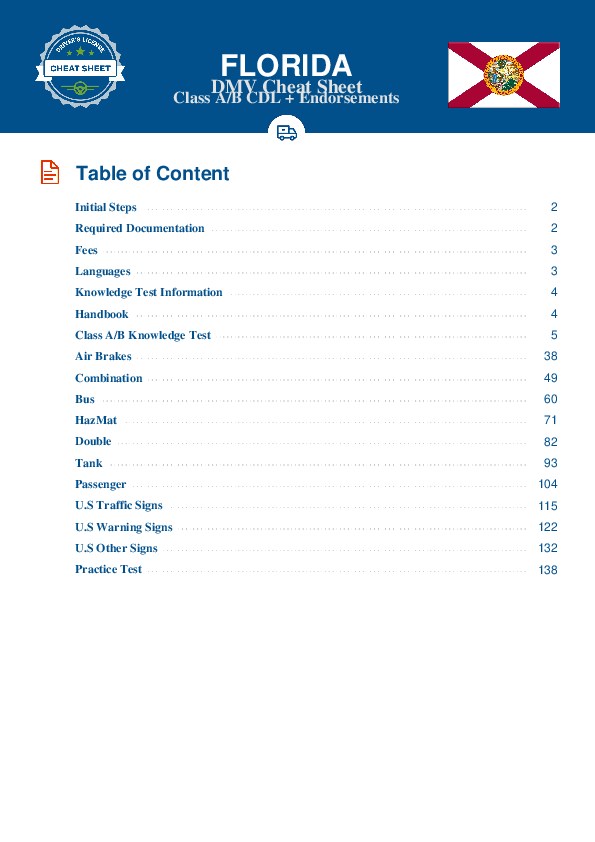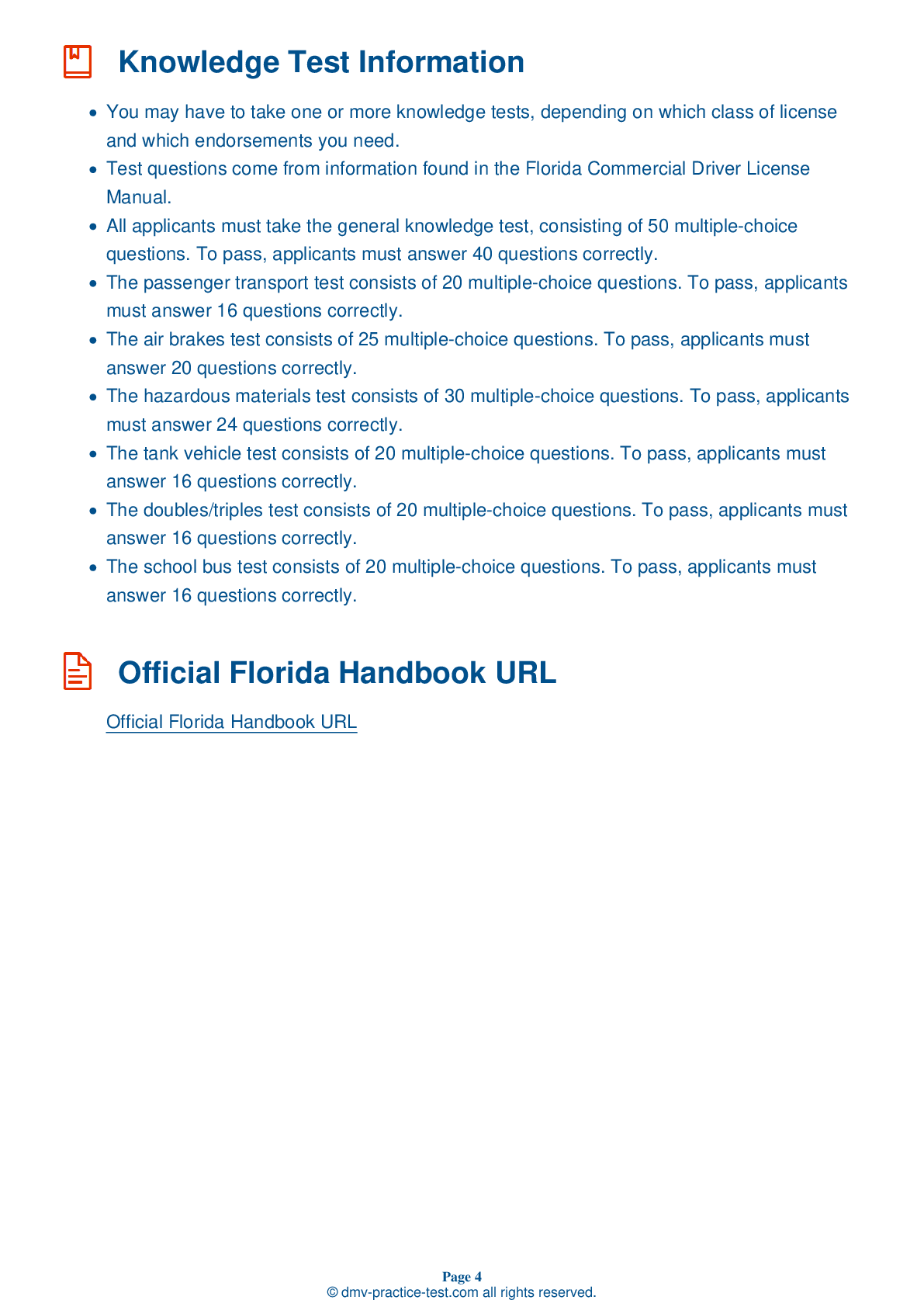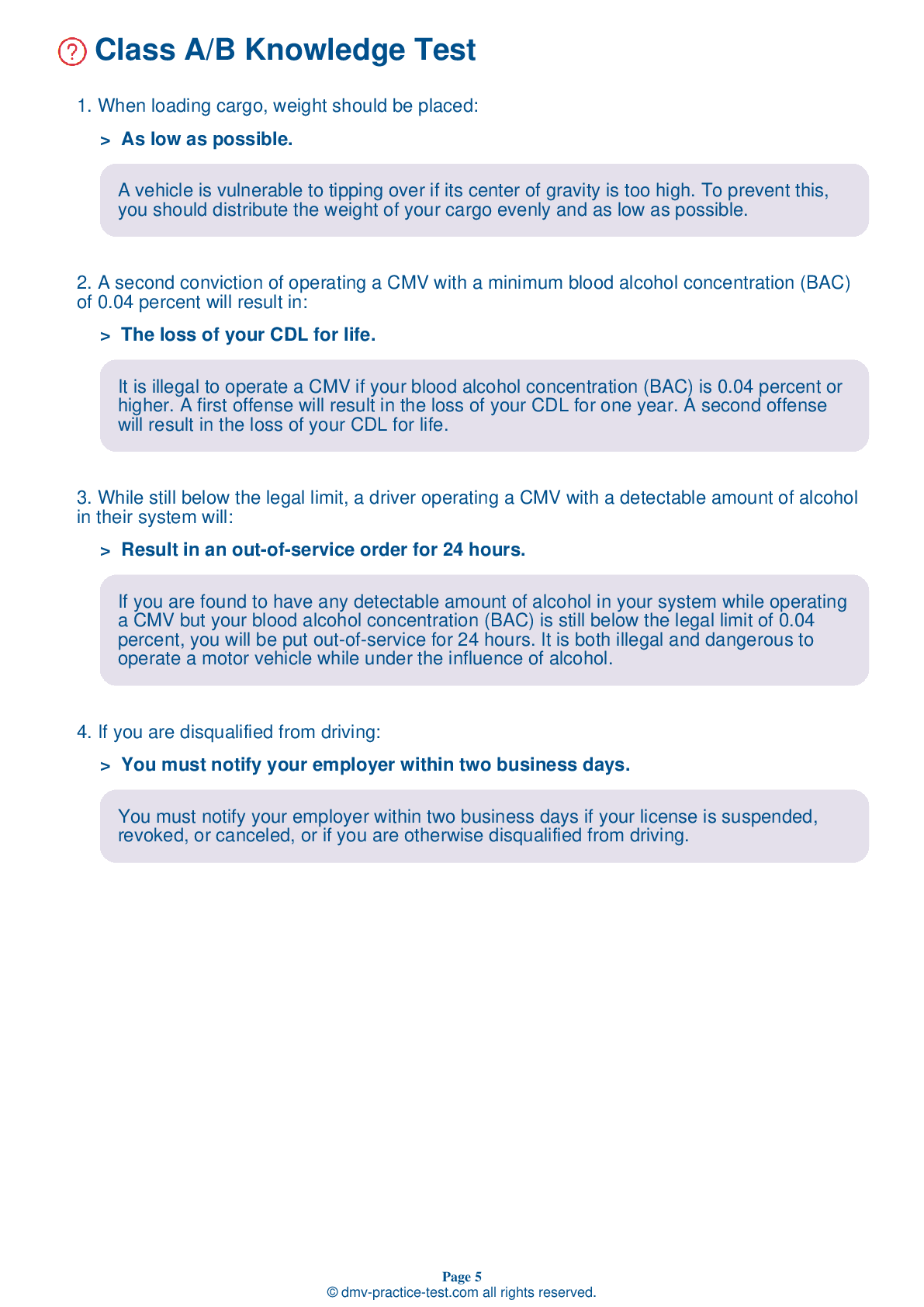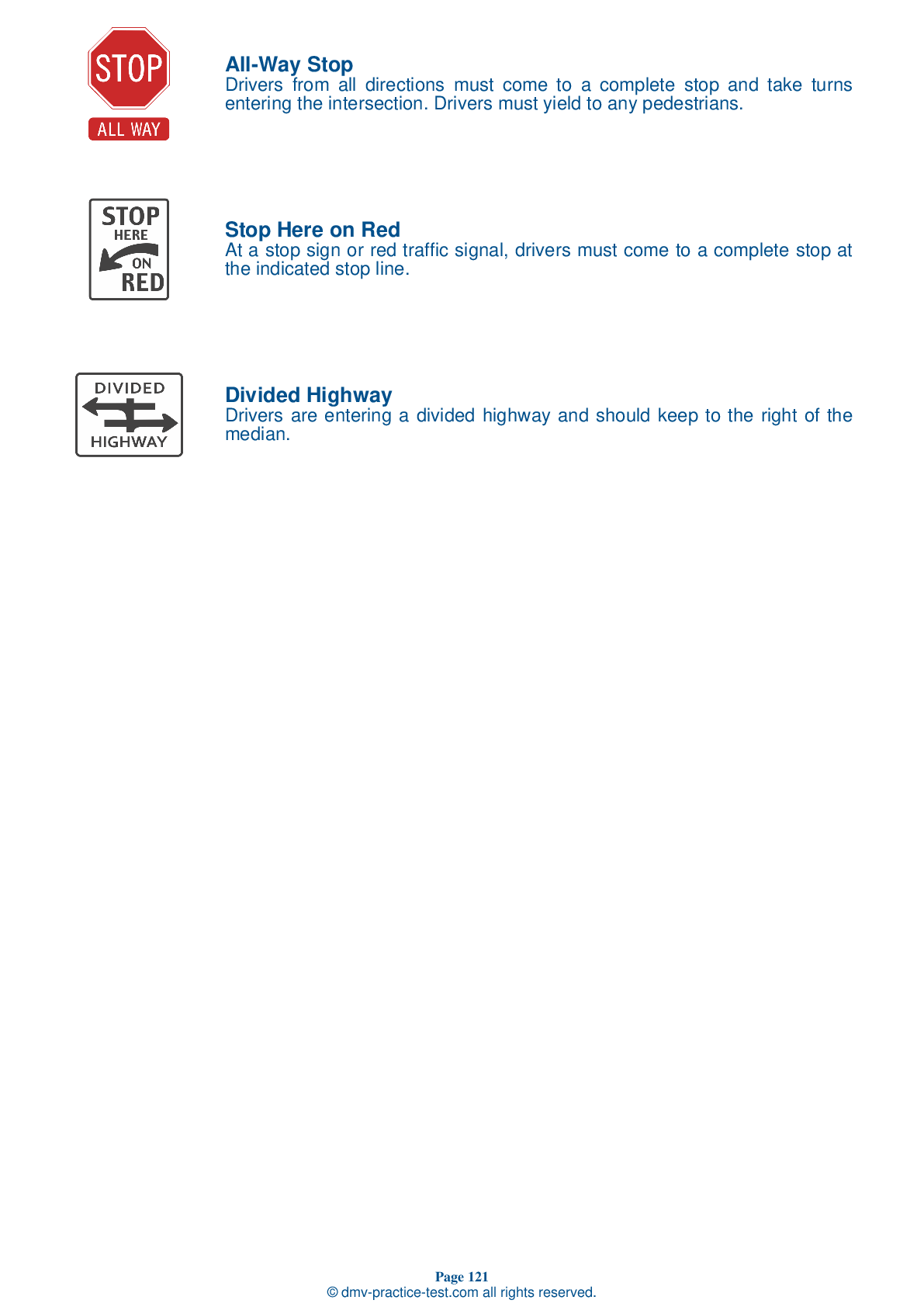Hazmat Test | Florida 2025 #2 Page 5 of 5
On our website, we provide FREE practice - CDL hazmat test online! The official exam test consists of several obligatory parts, with all of them checking your knowledge of different blocks of road rules. If you need to obtain a FL CDL hazmat endorsement in 2025, practice as much as possible. Free sample tests published on our website will help you check and improve your knowledge and boost your grades. Please bear in mind that Florida requirements for issuing a hazmat endorsement for CDL may vary from those established in other states.
25 . Who must provide emergency response information?
Shippers of hazardous materials are required to provide emergency response information to drivers.
26 . If a product requires a "Poison Inhalation Hazard" placard, the placard must be used when transporting:
For applicable materials, the "Poison Inhalation Hazard" placard and the appropriate hazard class placard must always be displayed, even for small amounts of the materials.
27 . What shape is a placard indicating hazardous materials?
In general, vehicles carrying hazardous materials are required to display diamond-shaped warning signs on all four sides. These warning signs are called "placards."
28 . When a driver is not in their vehicle, hazardous materials' shipping papers should be:
Shipping papers for hazardous materials should always be easily accessible. When a driver is not in their vehicle, hazardous materials' shipping papers should be left on the driver's seat.
29 . If a leak is suspected in a cargo of radioactive material:
If you are transporting radioactive material and believe there is a leak or broken package in your cargo, you should tell your dispatcher or supervisor as quickly as possible. Do not touch or inhale the material. Do not use the vehicle until it has been cleaned or checked with a survey meter.
30 . What does "RQ" stand for?
When marking hazardous materials in an "HM" column on a shipping paper, the letters "RQ" may be used instead of an "X" if a reportable quantity of the material must be identified.
See the exact questions that will be on the 2025 Florida DMV exam.
99.2% of people who use the cheat sheet pass the FIRST TIME
Lillian MCcranie explains how our CDL study guide was helpful in passing the exam and recommends it to everyone.
Cameron tells us how he purchased the CDL exam, and found it to be a useful tool which helped him pass the exam and find a job.



